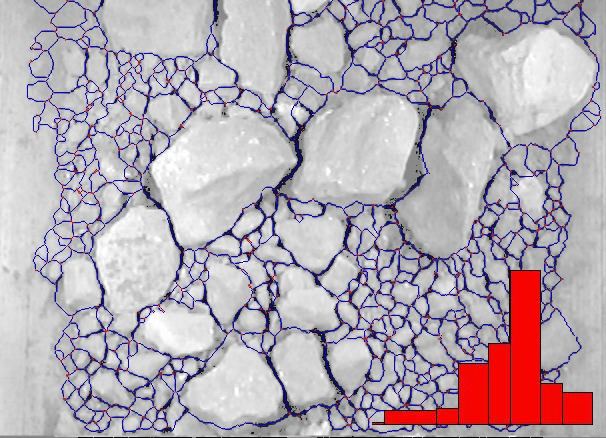 | ||
Particle size, also called grain size, refers to the diameter of individual grains of sediment, or the lithified particles in clastic rocks. The term may also be applied to other granular materials. This is different from the crystallite size, which refers to the size of a single crystal inside a particle or grain. A single grain can be composed of several crystals. Granular material can range from very small colloidal particles, through clay, silt, sand, gravel, and cobbles, to boulders.
Contents
Krumbein phi scale
Size ranges define limits of classes that are given names in the Wentworth scale (or Udden–Wentworth scale) used in the United States. The Krumbein phi (φ) scale, a modification of the Wentworth scale created by W. C. Krumbein in 1937, is a logarithmic scale computed by the equation
where
This equation can be rearranged to find diameter using φ:
In some schemes, gravel is anything larger than sand (comprising granule, pebble, cobble, and boulder in the table above).
International scale
ISO 14688-1:2002, establishes the basic principles for the identification and classification of soils on the basis of those material and mass characteristics most commonly used for soils for engineering purposes. ISO 14688-1 is applicable to natural soils in situ, similar man-made materials in situ and soils redeposited by people.
Sorting
An accumulation of sediment can also be characterized by the grain size distribution. A sediment deposit can undergo sorting when a particle size range is removed by an agency such as a river or the wind. The sorting can be quantified using the Inclusive Graphic Standard Deviation:
where
The result of this can be described using the following terms:
